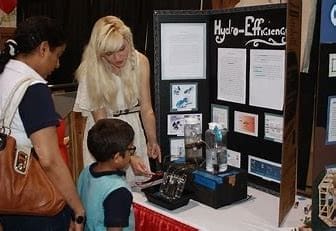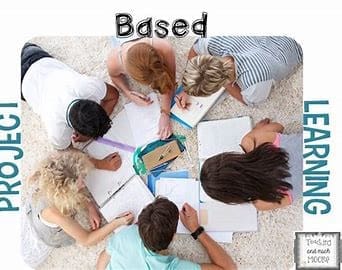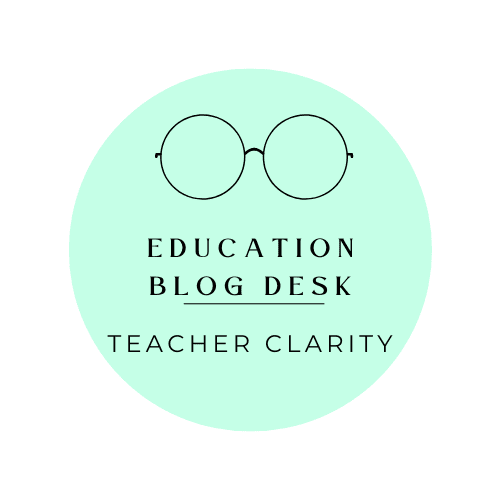
Project Based Learning: Explained Video
Unlocking Creativity & Collaboration: Project Based Learning


PBL is all about engaging students in real-world challenges and complex questions, driving them to explore and discover answers through a journey of learning. Unlike the more traditional sit-and-get method of instruction, PBL shifts the gears by placing students in the driver’s seat of their educational vehicle, fostering an environment where learning is active, collaborative, and student-centric.
What sets PBL apart is its core philosophy. This isn’t a mere transfer of facts from the teacher’s notebook to the student’s mind. It’s about cultivating a space for students to develop critical thinking skills, solve problems, make decisions, and build on their natural curiosity. With PBL, teachers become facilitators, and camaraderie blooms as students work together towards a common goal. If you’re curious to see how classrooms can transform into buzzing hubs of innovation and teamwork, read on to discover the essence of PBL.
PBL, also called project-based instruction, is a way of teaching that puts the focus on the students and gets them to learn by giving them interesting, real-life problems or challenges connected to the curriculum.
According to the article Project-Based Learning (PBL) Benefits, Examples & 10 Ideas for Classroom Implementation, the goal is to get students to engage with a question or challenge that requires concentration and nuanced problem-solving skills.
This question or challenge must:
- Be open-ended
- Encourage students to apply skills and knowledge they’ve developed in your classes
- Allow students to take their own approaches to develop an answer and deliver a product
It’s often cross-disciplinary and based on critical thinking. It encourages students to take a rewarding, yet difficult path to skill-building and knowledge acquisition through a nuanced learning process.
Unpacking the Core Components of PBL
Peeling back the layers of PBL reveals several key ingredients that make this educational approach so dynamic and effective. Here’s a rundown of the essentials that give PBL its unique flavor in the world of learning.
The Central Role of Projects
At the heart of PBL beats the pulse of engaging projects. These aren’t your average class assignments; they’re complex tasks that stimulate curiosity and demand creativity. Projects in PBL are not just side dishes; they’re the main course, giving students a chance to dive deep and get their hands dirty with real challenges.
Student-Driven Learning Process
Gone are the days of passive learning, where students are mere spectators. PBL puts the learners in the driver’s seat. Student-driven means they’re making the critical decisions, steering the inquiry, and owning their educational journey every step of the way. It’s learning by doing, with the students at the forefront.
Inquiry and Problem-Solving Approach
Think of PBL as the playground for the inquisitive mind. The approach is rooted in inquiry and problem-solving, encouraging students to question, explore, and puzzle out solutions. This isn’t about rote memorization, it’s an immersive game of intellectual detective, with students following clues and solving problems that matter to them.
- Projects are not just for show; they are integrated into the very essence of learning, fostering deep engagement.
- Students take the lead, setting goals, managing their time, and learning to rely on their own initiative and drive.
- The emphasis on inquiry invites students to ask bold questions and challenges them to think critically to find solutions.
Student-Centered Learning Approach
At the heart of PBL lies the student-centered learning approach. This innovative method flips the traditional classroom script, transforming students from passive receivers of information into active participants in their own educational journey.
How PBL Promotes Autonomy and Responsibility
PBL is as much about cultivating skills as absorbing knowledge. By handing over the reins of learning to the students, PBL encourages them to take autonomy in their study paths and instills a sense of responsibility for their own success. It’s about giving them the map and charting their course, with the teacher as the guide, rather than the directive captain.
The Shift in Power Dynamics from Teacher to Student
Gone are the days of top-down instruction where the teacher holds all the power. In a PBL classroom, the power dynamics shift, placing students at the center of the learning process. The teacher’s role is more akin to a facilitator or coach, empowering students to ask questions, explore, and make decisions that impact their learning outcomes.
Fostering a Sense of Ownership Over Learning
The magic of PBL is that it fosters deep ownership in students over their learning. When kids decide what they study and approach their projects, something remarkable happens: they become more engaged, motivated, and invested in the material. It’s no longer about ticking boxes for grades; it’s about pursuing knowledge for the sheer joy of learning and personal growth.
- Students develop critical thinking and decision-making skills.
- Learning becomes more meaningful as students connect subjects to their own interests and goals.
- Autonomy in the classroom can lead to increased confidence and a stronger sense of self-efficacy among students.
Unpacking the Perks of PBL
PBL isn’t just another educational buzzword; it’s a powerhouse when it comes to transforming the classroom. By immersing students in the nitty-gritty of collaborative and authentic tasks, PBL provides a smorgasbord of benefits that traditional teaching methods can’t touch. Let’s dive into the standout perks that make PBL a game changer in education.
Boosting Student Engagement
Ever watched students’ eyes glaze over during a lecture? With PBL, that’s a scene of the past! This dynamic approach hooks students’ interest from the get-go, turning passive listeners into active participants. When learners have a hand in steering their own projects, they’re naturally more invested, attentive, and, dare we say, excited about their educational journey.
Cultivating Critical Thinkers and Master Problem-Solvers
In a world brimming with complex puzzles, PBL is like the ultimate brain gym for students. This method chisels their critical thinking and problem-solving muscles by presenting challenges that require analysis, strategy, and creativity. Rather than spoon-feeding them answers, PBL encourages kids to ask questions, think deeply, and concoct solutions that might just become tomorrow’s innovations.
Prepping Warriors for the Real-World Arena
Reality check: life beyond the classroom isn’t a multiple-choice test. That’s why PBL is so pivotal—it preps young minds for real-life scenarios where success hinges on collaboration, adaptability, and out-of-the-box thinking. Whether they’re future entrepreneurs, scientists, or artisans, PBL equips them with a toolkit that’s as practical as it is academic, merging theory with the actual “doing” part of learning.
- Enhanced student engagement through hands-on, active learning
- Development of critical thinking and problem-solving skills via real-world challenges
- Preparation for the complexity of real-life tasks and jobs
Embarking on the PBL Journey: Essential Steps to Success
PBL is not just a teaching method, it’s a vibrant journey into authentic learning. Implementing PBL might seem daunting at first, but with the right steps, it unfolds into an enriching experience for both students and educators. Let’s break it down into manageable milestones.
Initial planning and project design
Every successful project starts with a plan. As an educator, your first step is to outline the goals, outcomes, and scope of the project. Think about the core question or challenge that will drive your students’ inquiry, and consider how the project aligns with curriculum standards. Remember, a thoughtful design is the blueprint of effective PBL.
Check out my post 3 Planning Steps of PBL You Need to Know from Ross Cooper and Erin Murphy, authors of Project Based Learning Real Questions. Real Answers.
Incorporation of student input and choice
A hallmark of PBL is its emphasis on student agency. Give your learners a voice by incorporating their interests and choices into the project. This not only boosts engagement but also ensures that the learning experience is personalized and relevant to each student.
Execution and management of the project timeline
Now, it’s time to shift from planning to action. As your students embark on their projects, focus on facilitating and supporting rather than directing. Help them manage timelines, resources, and collaborate effectively. Your role is to be a guide on the side, assisting them as they navigate through the challenges and triumphs of their project.
- Plan checkpoints and milestones to keep the project on track.
- Encourage peer reviews and feedback for continuous improvement.
- Provide tools and strategies for time and task management.
By following these steps in implementing PBL, you’re setting the stage for a learning adventure that equips students with critical skills and deeper connection to their learning experiences. So, take a deep breath and dive into the world of PBL with confidence and excitement!
Example of PBL
From 100 Project Based Learning Ideas:
A project about pollution in the environment could be an example of PBL in a K–12 school. Students could learn about different kinds of pollution, make a presentation about what they learned, and then come up with a way to lower pollution in their town.
- They could learn the following from this project:
- Research skills, like being able to find and evaluate good sources
- Literacy in information, like knowing how to set up and show facts.
- Ideas in environmental science, like where waste comes from and how it affects the environment.
- Use creative thought and the ability to solve problems to make an action plan.
- When they presented their results and worked together on the project, they used their communication and teamwork skills.
Example PBL Lesson Plan
Lesson Title: Taking Action Against Environmental Pollution
Objectives:
- Students will research different types of pollution and their effects on the environment.
- Students will understand the importance of taking action to reduce pollution in their community.
- Students will design an action plan for reducing pollution in their community.
Materials:
- Internet access
- (optional) Research materials (books, articles, etc.)
- Presentation software (e.g., PowerPoint, Google Slides)
- Poster board or other materials for creating an action plan
Procedure:
- Introduction: Begin by discussing the concept of pollution and its adverse effects on the environment. Ask students to brainstorm examples of different types of pollution and their environmental effects.
- Research: Divide students into small groups and assign each group a specific kind of pollution to research. Provide each group with internet access and research materials. Give students time to conduct research and take notes on their findings.
- Presentation: Have each group create a presentation on their research findings. Encourage students to be creative and use visual aids in their presentations. Allow time for each group to present their findings to the class.
- Action Plan: After presentations, have students work in groups to create an action plan for reducing pollution in their community. Encourage students to think creatively about ways to reduce pollution. Allow students time to research and gather additional information they may need for their action plans.
- Implementation and Reflection: Encourage students to present their action plans to the class or a community group. The students should explain their plan and how they will implement it. If feasible, help students implement the plan in their community; after that, ask students to reflect on what they’ve learned throughout the project, how they felt during the different steps, and the successes and challenges of their plan.
- Assessment: Assessment can be done in various ways, for example:
- Evidence-based, authentic assessment by using the Unrulr app
- Self-reflection and peer evaluations on the presentations and action plans
- Observation of students during research, presentation, and plan implementation
- Formal assessments such as quizzes on pollution, what was learned about pollution, and the effects it has on the environment
Adaptations:
- Depending on the grade level and the students, the project can be adapted to their needs. For younger students, it may be simpler to focus on one type of pollution and its effects on their community.
- Depending on the subject, the project can be modified for the subject area, for example, science, social studies, language arts, or math.
- For students with special needs, you can adapt the projects with specific materials or instructions.
Keep Learning
How to Create Effective PBL Unit With 5 Important Tips
